With the Christmas Season upon us many will take time to remember military members who are defending the country at home and abroad. Over the years many sacrifices have been made by civilians to send to service members, in and out of war, a bit of home. One of the most memorable of these civilians was Bob Hope. Hope spent dozens of Christmases overseas, entertaining the troops usually under the auspices of the United Services Organization (U.S.O.).
Six organizations that had previously served soldiers during World War I combined to establish the U.S.O. in January of 1941 under President Franklin D. Roosevelt. The U.S.O mission was to provide a little bit of home and a Aca,!A"breakAca,!A? from war. This respite was needed most around the holidays when the service people would remember family gatherings and all the festivities of the Christmas season.
Bob HopeAca,!a,,cs first show for the U. S. Army occurred on May 6, 1941, at March Field, California. From the start, Hope felt that he was the lucky one when performing for the troops. He intended entertaining General EisenhowerAca,!a,,cs troops in Europe at Christmas time in 1944 Aca,!" but those performances were delayed a month by the Battle of the Bulge! His first Christmas show for troops that was also broadcast to the American people occurred in December 1948, in occupied Berlin during the airlift. From then on, a tradition began that lasted through the Cold War era, the Korean War, and the Vietnam War. Bob Hope is most famously remembered for his comedic timing and golf club prop. He is also notably remembered for his Vietnam Christmas tours. At the start of his first Vietnam Christmas tour in 1964, Hope did not realize the impact he would make on the American military and history.
His Vietnam Christmas tours would generally occur during the days between Christmas Eve and New YearAca,!a,,cs Eve. Performances were two and a half hours long and were presented at least twice a day. During these times HopeAca,!a,,cs Christmas television shows became one of the most watched programs of the holiday season. They provided a chance for families of Soldiers, Marines, Sailors, Coast Guardsmen, and Airmen to perhaps catch a glimpse of a loved one, while at the same time allowing these men and women a moment to relax.
Recognizing the fact that the Vietnam War was not a popular war at home, Hope focused his main concern on the troops themselves. Aca,!A"Every time I walked out on a stage, I was face-to-face with the kids who were doing the actual fighting. Their cheering and whistling told me one thing: They were very much alive and preferred to stay that way. I was only interested in doing what I could to see that most of them did just that.Aca,!A? Needless to say, the servicemen themselves looked forward to and loved HopeAca,!a,,cs shows, whether it was for the comedy or for the beautiful women who accompanied him.
The Christmas tours during Vietnam were different for Hope and his troupe than they were during World War II. It was the first time in American history that the media was able to portray the horrors of war in AmericaAca,!a,,cs living room, making an unpopular war even more unpopular in certain circles. However, Hope used the media to his advantage, using the broadcasts to remind protesting Americans that they should be protesting the politics and not the servicemen who were risking their lives on behalf of their country.
Not being oblivious to the politics of Vietnam, Hope and his troupe personally struggled with the war. Reinforcing the importance of the American servicemen, professional football player Roosevelt Grier stated, Aca,!A"Even though IAca,!a,,cm against the war, I came on this trip because I thought we ought to let the soldiers know that we were not deserting them.Aca,!A?
Their effort in providing entertainment for the troops was cherished by many. Service members and their families valued HopeAca,!a,,cs talents and remembered the day he performed for them as a highlight of their lives. Sergeant John Tully, Jr. of the 118th Infantry stated in a letter home, Aca,!A"DonAca,!a,,ct know how to express my joy at being fortunate enough to see them (Hope, Frances Langford, Tony Romano, and Jack Pepper) . . . the show was not a scheduled one . . . I wonder if the performers realize the wonderful work they are doing'Aca,!A?
This letter was written during World War II, but HopeAca,!a,,cs performances were timeless and left the same joy no matter the era. As we are in the midst of our Holiday Season, let us be thankful for those who willingly serve our country, and those who willingly strive to make our troopsAca,!a,,c lives a bit easier.
EditorAca,!a,,cs Note: Our guest contributor, Carol Funck, served as a student volunteer at the Army Heritage and Education Center, during the summer 2008. She is a member of the Class of 2009, and an American Studies major at Washington College, Chestertown, Maryland.
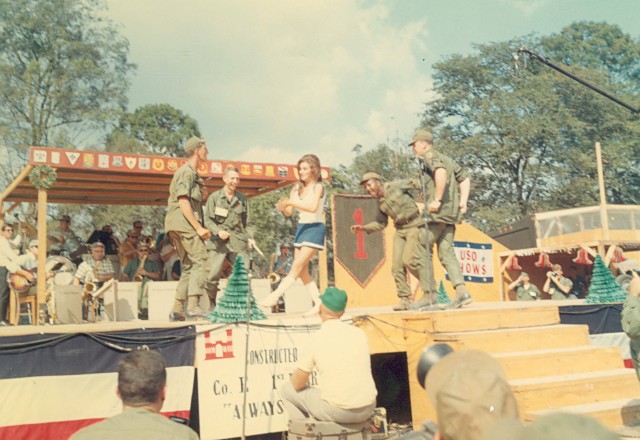
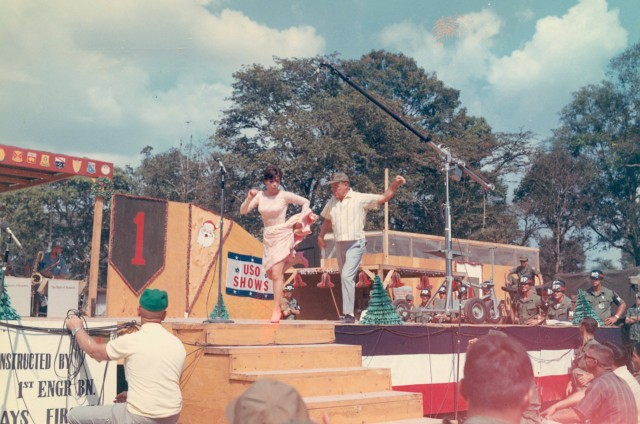
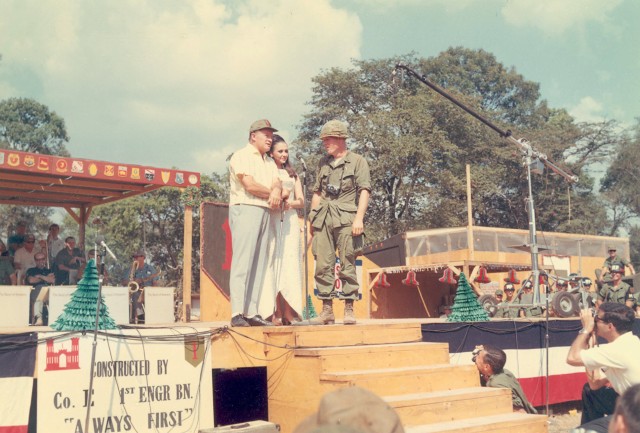
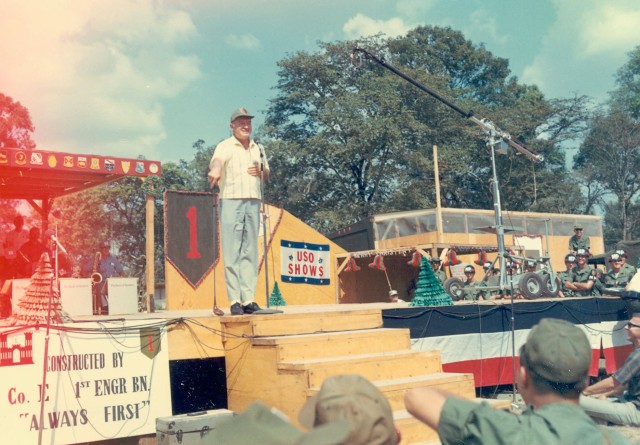
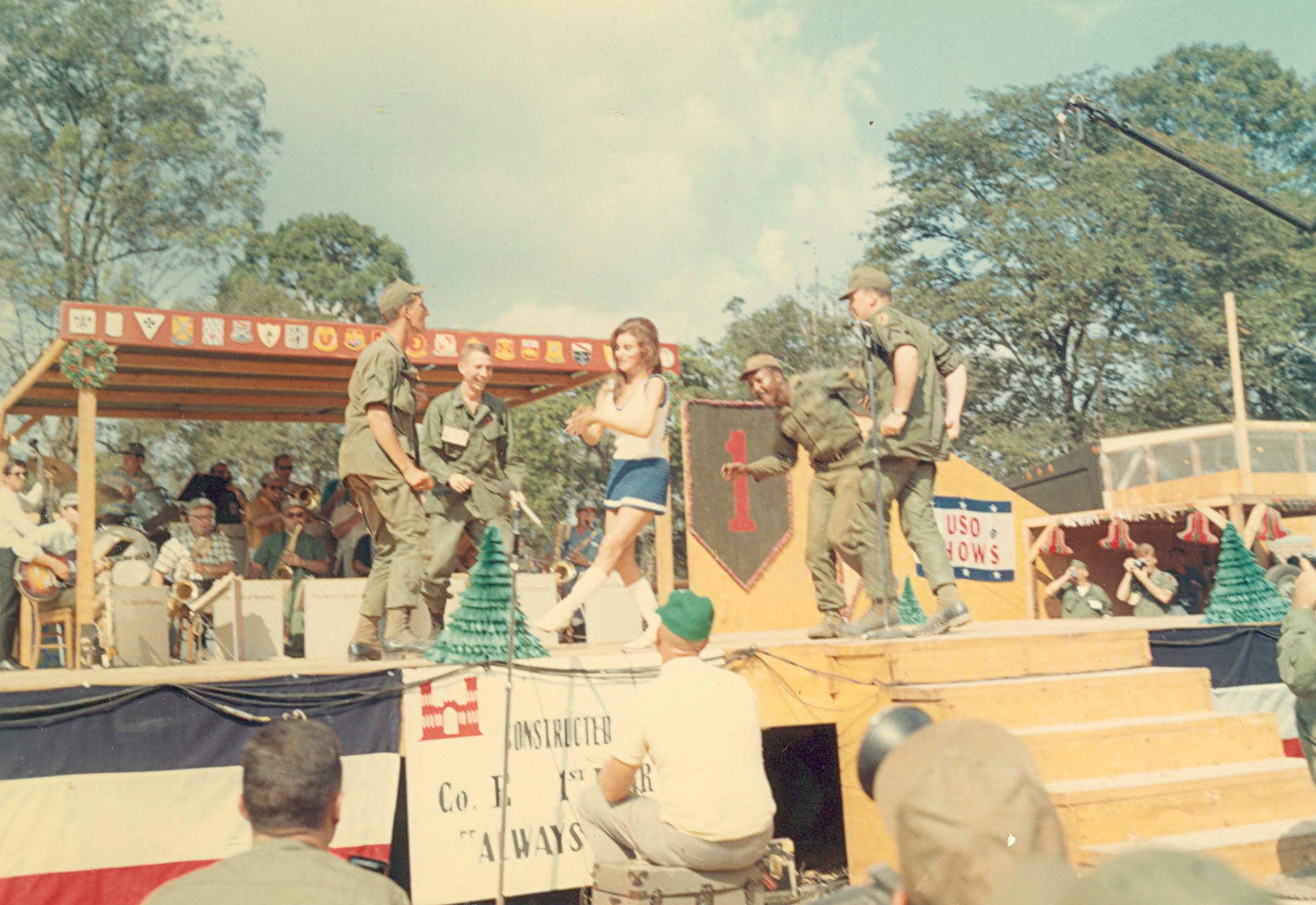
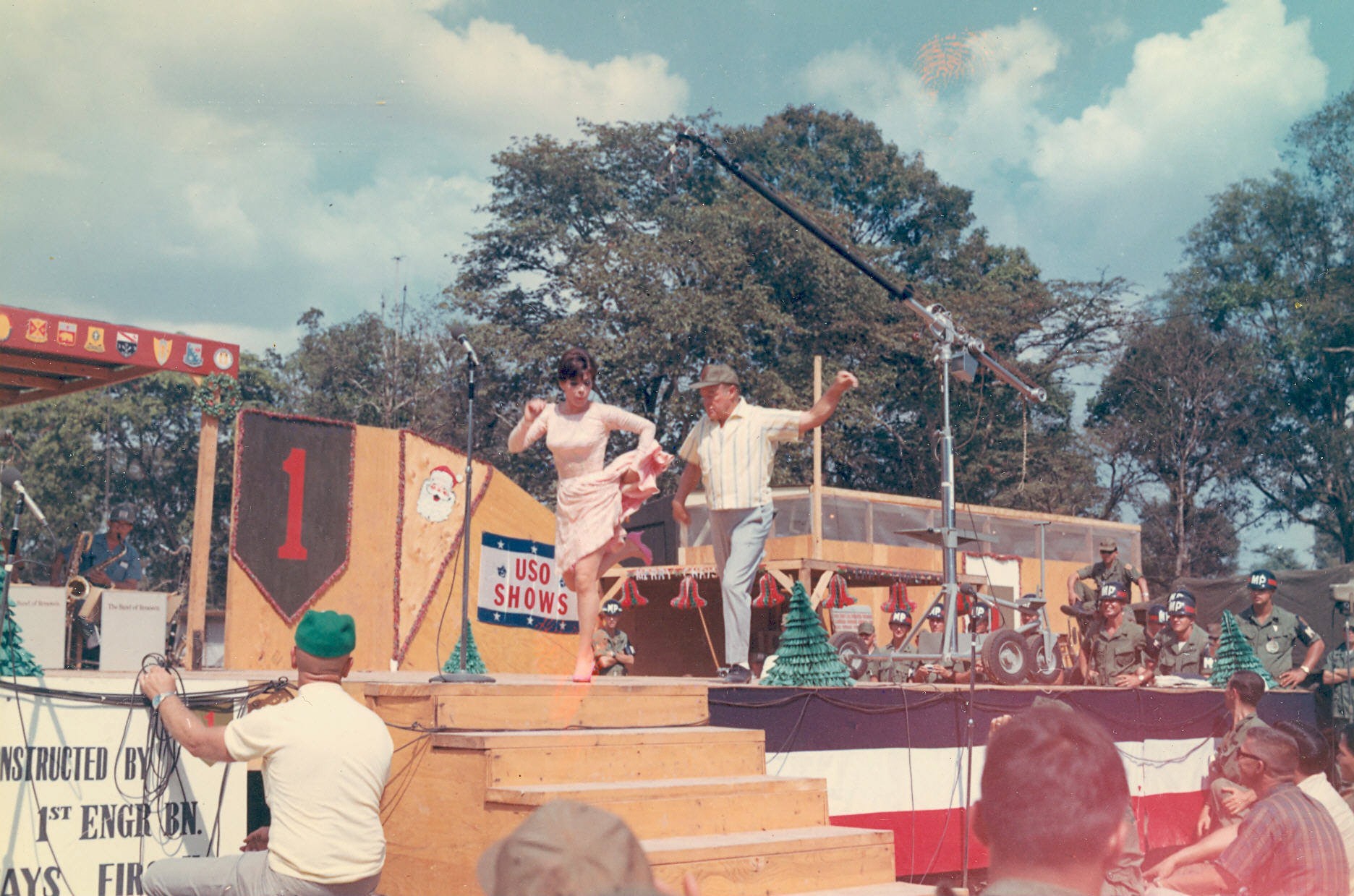
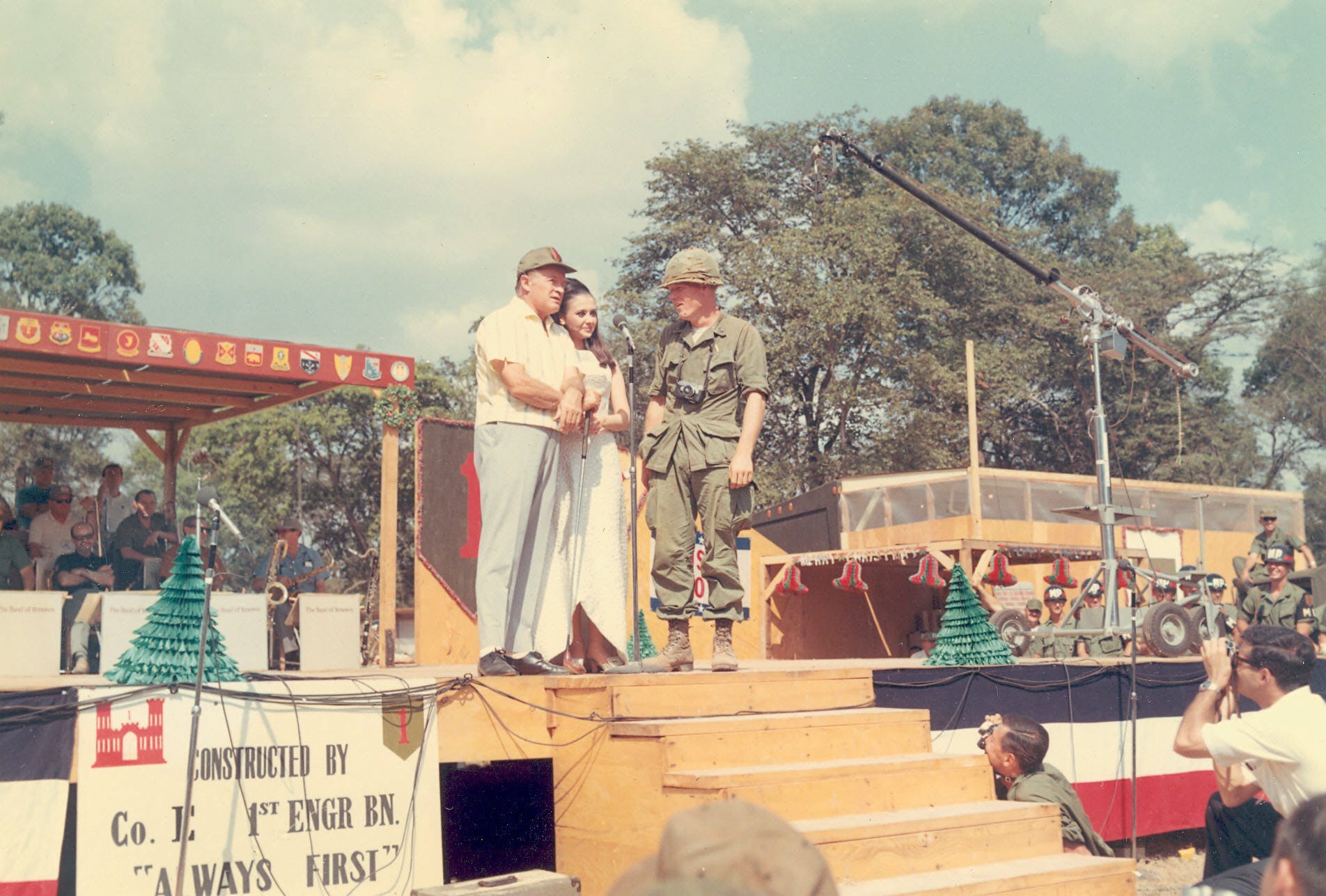
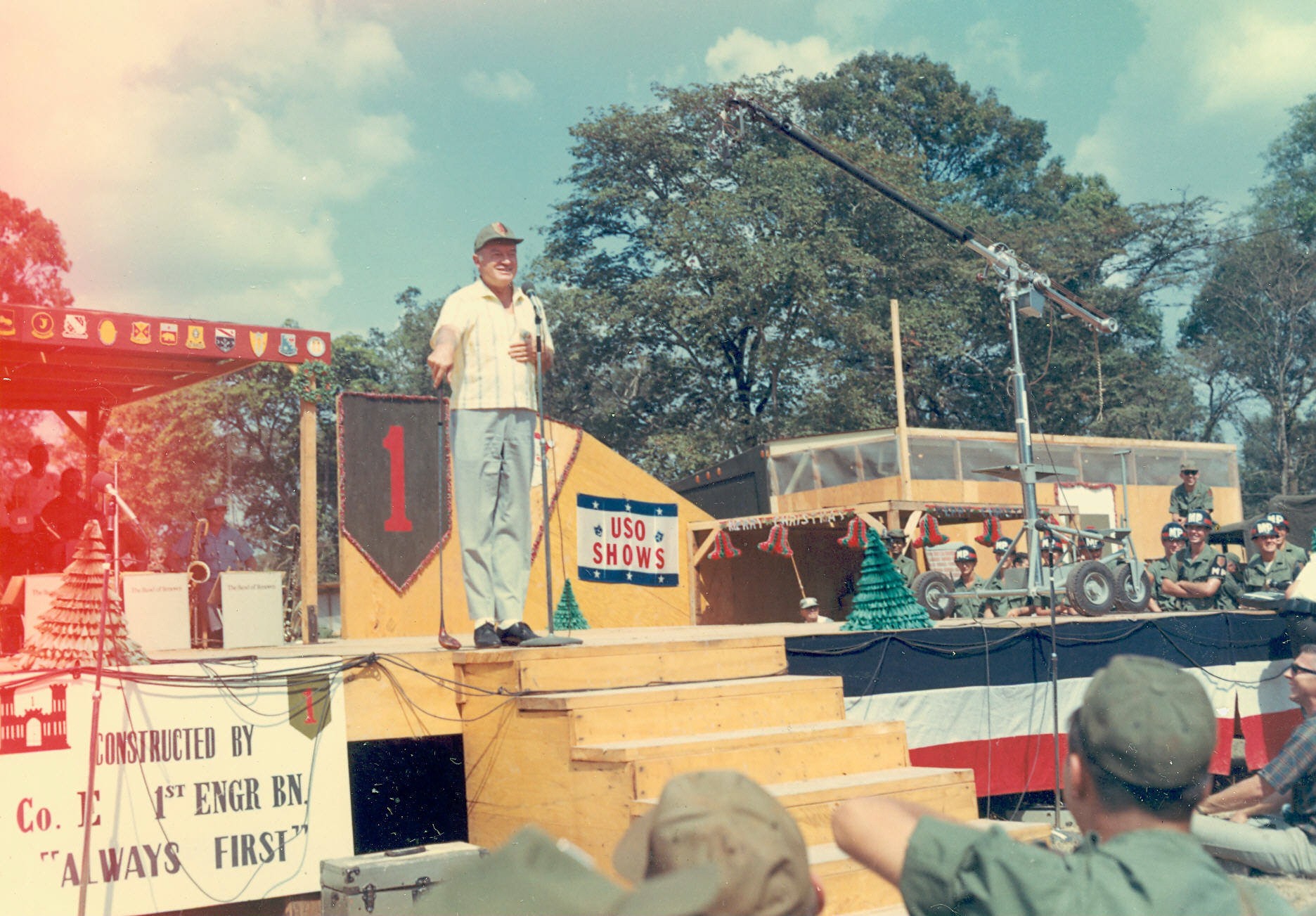
Social Sharing